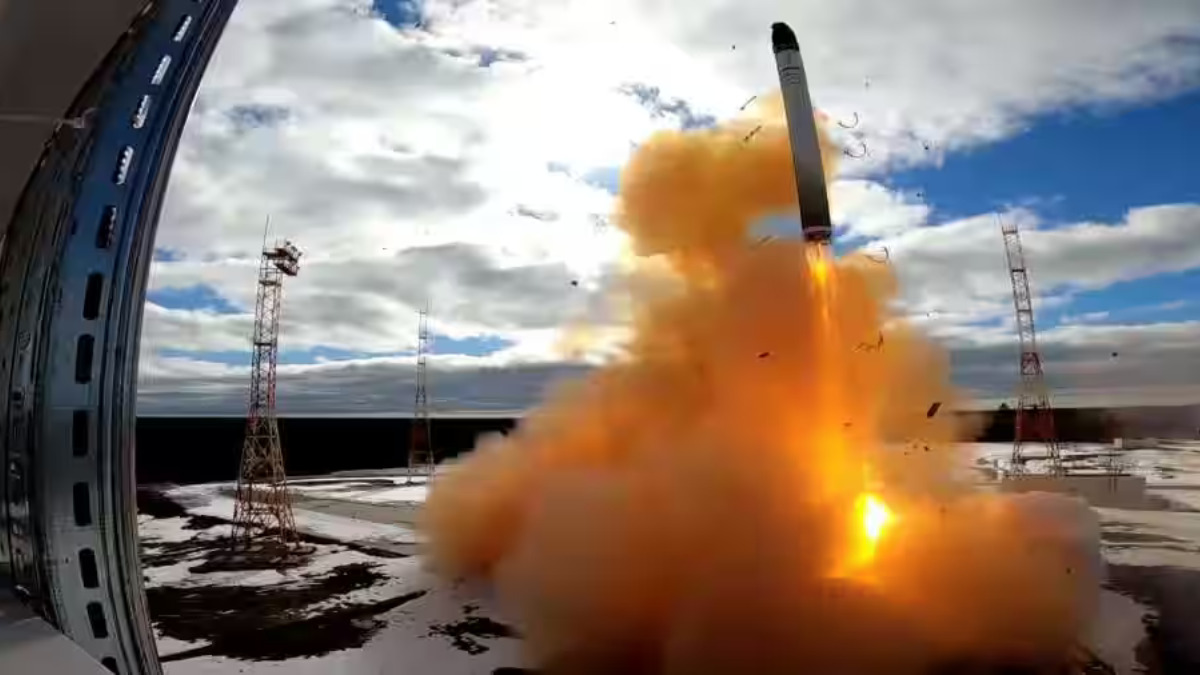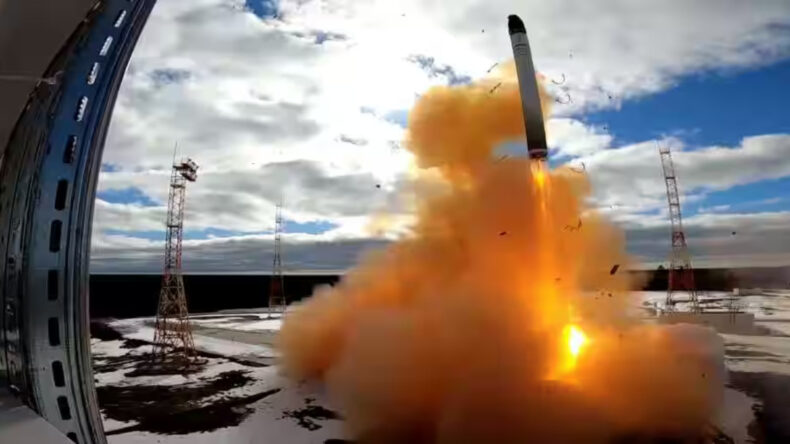On Wednesday, President Vladimir Putin announced that Russia would soon deploy its advanced Sarmat intercontinental ballistic missiles for active military service. These missiles possess the capability to carry more than 10 nuclear warheads.

During a speech to recent graduates of military academies, President Putin emphasized the significance of Russia’s “triad” of nuclear forces, which can be launched from land, sea, or air. He stated that the primary objective lies in advancing the nuclear triad, as it serves as a vital assurance of Russia’s military security and contributes to global stability.
President Putin announced that approximately half of the Strategic Missile Forces’ units and formations are already equipped with the latest Yars systems. Additionally, the troops are undergoing a process of modernizing their missile systems with the Avangard hypersonic warhead. He further stated that the initial deployment of the Sarmat launchers for combat duty will occur soon.

During the ceremony held in the Kremlin’s St George’s Hall, which honors notable achievements in Russian military history, Defense Minister Sergei Shoigu expressed his view to the graduating students that the “collective West” is engaged in a genuine conflict against Russia. He characterized this situation as a “real war” being waged against the country.
Since the onset of the Ukraine conflict, President Putin has reiterated on numerous occasions that Russia is prepared to employ all available measures, including nuclear weapons, to safeguard its “territorial integrity.” In a statement made last year, he declared that territories acquired in Ukraine, which Russia currently asserts as its own, would fall under Moscow’s nuclear protection.
In a recent statement, President Putin expressed his belief that the current counteroffensive by Ukrainian forces stands little chance of succeeding, and he emphasized that Russia does not consider it necessary to resort to nuclear weapons in the ongoing conflict.
Russia’s new ICBM Sarmat
The Sarmat missile, which is a formidable weapon designed for carrying out long-range nuclear attacks, has encountered setbacks in its deployment timeline. Initially scheduled to become operational by the autumn of 2022, Russia’s progress in implementing the missile has not been as rapid as expected.
The new Sarmat missile has been specifically designed for conducting nuclear strikes on targets located thousands of miles away, such as the United States or Europe. However, its deployment has experienced delays compared to the initial plans. Russia had previously stated in April 2022 that the missile would be deployed by autumn of the same year.
Former head of Russia’s space agency, Dmitry Rogozin, had previously announced that the Sarmat missiles would be deployed in the Krasnoyarsk region of Siberia, approximately 3,000 km (1,860 miles) east of Moscow. He stated that the new missiles would be stationed in the same locations and silos as the older Voyevoda missiles they are replacing. Rogozin referred to the Sarmat as a significant development, describing it as a “super-weapon” that would ensure the security of future generations in Russia for the next three to four decades.
Amidst reports of Ukraine’s establishment of 12 brigades to initiate a counteroffensive aimed at reclaiming regions currently occupied by Russia, Russia has made an announcement regarding its Sarmat missiles. Volodymyr Zelensky, the Ukrainian leader, has acknowledged that Ukraine’s counteroffensive may not be progressing as quickly as desired. Despite conducting offensive operations for two weeks, Ukraine has only declared the liberation of eight villages.













